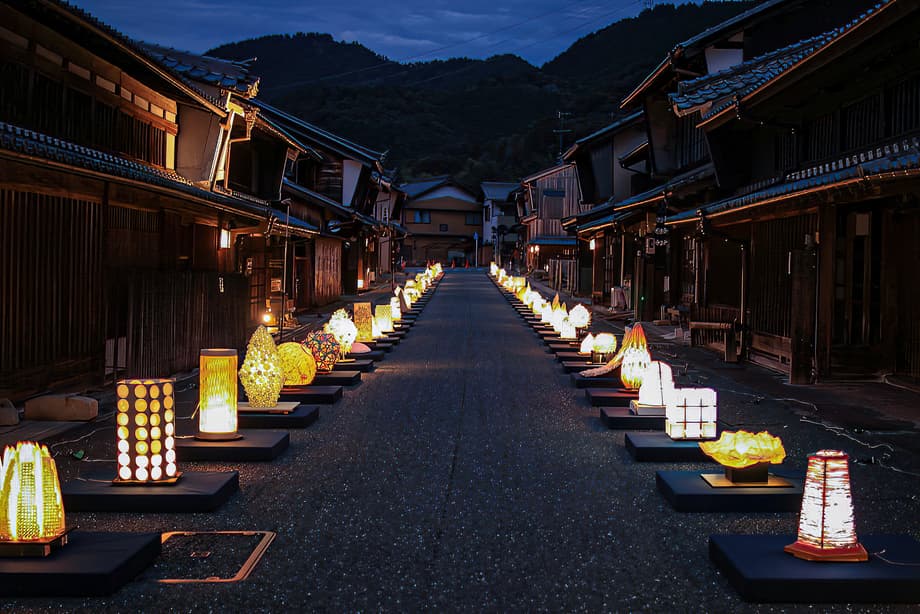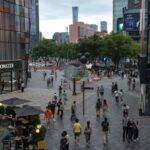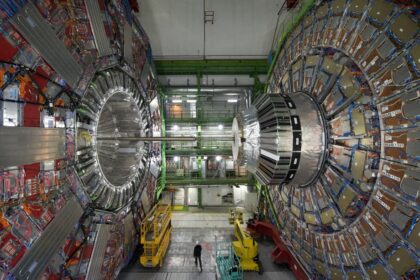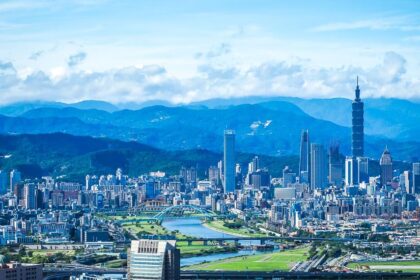A city glowing with handmade light
Each autumn, Mino City in Gifu Prefecture turns its historic merchant quarter into a nighttime gallery, where hundreds of handmade paper lanterns bathe Edo period streets in a gentle glow. The Mino Washi Akari Art Exhibition is both a celebration of local craft and a living museum after dark, inviting visitors to stroll past wooden facades and udatsu fire walls as soft light spills from intricate artworks. The setting is the Udatsu Wall Historical District, a rare ensemble of preserved architecture that gives the event its distinctive sense of place.
- A city glowing with handmade light
- What is Mino washi and why light reveals its beauty
- How the 2025 exhibition is organized
- The historical stage Udatsu walls and a preserved merchant town
- Scenes beyond the lanterns
- Getting there and practical tips
- Where to experience washi beyond the night lights
- Why this festival matters
- At a Glance
The 2025 edition runs from October 12 to November 30 and unfolds in two phases that showcase different facets of the tradition. Part one features around 300 new works, created by artists from across Japan and presented along the district in the evenings. On one special evening, Pedestrian Paradise Day (October 18), traffic stops, protective cases come off, and visitors can move freely across the lanes to view each piece without car noise or glare. Part two continues from October 25 to November 30 with about 140 award winning works from past years. Across the entire period, the town shifts into an illuminated open air gallery during evening hours (17:00 to 21:00), and admission is free.
Lantern art made with Mino washi lends the streetscape a warm, layered texture. The paper filters light in a way glass cannot, revealing fine plant fibers and hand formed surfaces. In places, reflections ripple across the Itadori River, while shadow play on timber storefronts deepens the district’s aged character. The result is a calm, intimate atmosphere that rewards slow walking and close looking.
What is Mino washi and why light reveals its beauty
Mino washi is a handmade paper with more than a millennium of history in this region. Artisans separate fibers from the kozo plant, work them into a pulp with water and neri (a plant based formation aid), then form sheets on a bamboo screen. The method produces thin but strong paper with distinctive translucency. When light passes through, the paper’s fine fibers scatter and soften it, producing the signature glow that defines akari art in Mino.
A craft rooted in centuries
Traditional paper making in Mino dates back roughly 1,300 years, and the area’s purest form of the craft, honminoshi, is produced entirely by hand. The process spans many careful steps: steaming and stripping kozo branches, cleaning and beating the fibers, then forming sheets on a frame called a suketa. After pressing and drying, the sheets become both durable and light transmitting. Washi made in select communities, including Mino’s honminoshi, received recognition as an intangible cultural heritage in 2014. That designation helped spotlight how paper made with natural fibers, water, and time intensive skill still matters in an age of machine made material.
From workshop to street installation
The exhibition uses this craft as its medium. Artists cut, fold, weave, and sculpt Mino washi into forms that glow from within. Some works are minimal and geometric, others resemble flowers, waves, or creatures, and many rely on layered sheets that make light seem to breathe. The paper’s strength allows delicate framing, while its translucence softens LEDs into candle like radiance. The result is a public art show where technique and tradition are visible inside every beam of light.
How the 2025 exhibition is organized
The schedule separates new creativity from celebrated classics so visitors can enjoy both the thrill of fresh work and the pleasure of revisiting favorites in a quieter autumn mood. The district glows each evening, and the layout encourages walking, lingering, and returning on different nights to discover details missed before.
Part one new works and one car free night
Part one runs from October 12 to 24 and places roughly 300 new Mino washi creations along the Udatsu Wall Historical District. During this period, the artworks sit inside clear acrylic cases that protect them from wind or light drizzle, which lets visitors enjoy them even if the weather shifts. On Pedestrian Paradise Day (October 18, 17:00 to 21:00), the district becomes car free and the protective cases are removed for a single evening, giving photographers and families an unobstructed view. Traditional culture steps into the light as well. Performances of Mino Nagashi Niwaka, a locally passed down comic skit, and a concert by Mino born artist Ryoko Yokota add energy to the streets.
Part two award winners and autumn color
From October 25 to November 30, the exhibition shifts to around 140 award winning works from previous years. By late October the surrounding hills wear deeper reds and golds, and many visitors pair the display with leaf viewing in the area. As the river reflects lanterns and maples, the mood turns contemplative. The award winners stand out for their use of shadow, layering, and structure, and experienced visitors often return during this phase to study construction techniques up close.
The exhibition is inclusive by design. Submissions come from professional artists, students, and local families, which creates a playful mix of styles alongside highly refined pieces. On rainy evenings, droplets bead on the acrylic cases and add sparkle to the light, while on clear nights the sky frames the works with a fine wash of stars.
The historical stage Udatsu walls and a preserved merchant town
The lanterns appear inside a district shaped by Edo period commerce and architecture. The area’s trademark features are udatsu, raised fire walls that sit between neighboring buildings. Merchants once treated these as both practical barriers and statements of pride, each family refining the design to signal success. The expression udatsu ga agaranai, meaning a person cannot rise in life, draws on the idea that only thriving households could afford to build or embellish these walls.
Today, the Udatsu Wall Historical District is a nationally designated area for groups of historic buildings. Wide frontages, latticework, and plastered surfaces catch the lantern glow and break it into gradients. In that light, the townscape becomes a living set. Visitors see small eaves, wooden shutters, and quietly weathered textures reveal themselves in a way that daylight does not often grant.
Scenes beyond the lanterns
Mino pairs night light with autumn color. A short trip from the district leads to Oyada Momiji Valley, where roughly 3,000 maple trees color the ravine. When conditions allow, evening illumination brings out a deep crimson canopy above dark rock and water. Closer to town, the landmark known as Sukeemonsa’s Maple Trees is said to trace its origins to plantings from Kyoto. These sites make natural companions to the exhibition, since both highlight subtle gradients of color and shadow.
The early part of the exhibition often coincides with the Seki Cutlery Festival in nearby Seki, a major center of sword and knife making. Visitors who plan carefully can view the glowing streets in Mino and spend daytime hours in Seki learning about forging traditions and modern blades. The pairing makes for a full autumn weekend that blends craft, history, and outdoor walking.
Getting there and practical tips
Access and hours
Mino is easy to reach by rail. From Gifu Station, take the JR Takayama Line to Mino Ota Station, then transfer to the Nagaragawa Railway for Minoshi Station. The Udatsu Wall Historical District sits about a 13 minute walk from Minoshi Station. Evening viewing typically runs from 17:00 to 21:00, and admission is free. On October 18, the district becomes car free during the same evening hours. For the most current details on dates and any special programming, check the official event page on the Gifu tourism site at Visit Gifu.
Tips for a smooth visit
October evenings in central Japan can feel crisp, so bring layers and comfortable shoes for cobbled streets. Arrive before dusk, find a starting point near the heart of the district, then loop slowly to catch how the glow changes as night deepens. If you plan to photograph, be mindful of tripods in narrow lanes and step aside to keep pathways clear. Light rain can add sparkle, since the acrylic cases protect most works, but an umbrella and a small towel for camera gear help. Local shops and food stalls often operate during the event, and many accept cash only. The experience rewards unhurried pacing, moments by the river, and a second pass down favorite streets.
Where to experience washi beyond the night lights
The town’s relationship with paper is easy to explore in daylight. The Mino Washi Akari Art Museum displays past award winners year round in a gallery that recreates the festival atmosphere indoors. Visitors can study how sheets of washi are joined, how frames support delicate structures, and how artists coax different colors and shadows from the paper. The museum shop carries lanterns and other washi goods made by local studios, and the building itself is a registered cultural property from the Showa era.
Mino offers a range of places to stay, from modern hotels near the Nagara River to traditional inns within reach of the historic district. Options include the Fairfield by Marriott Gifu Mino, which gives easy access to regional sights, and Mino Ryokufusou, a classic Japanese inn known for seasonal cuisine. An overnight stay lets you see the streets late in the evening when crowds thin and the glow feels especially calm, then return in the morning to enjoy cafes, galleries, and river views.
Why this festival matters
The exhibition keeps a centuries old craft visible and relevant. Public art on this scale creates demand for fine paper, supports studios that make it, and draws younger creators into the tradition. Many entrants are students and families, which keeps experimentation lively and helps pass techniques to new hands. The event also sustains a district that holds national heritage status, bringing respectful foot traffic that encourages preservation without turning the streets into a daytime museum set.
Mino’s akari art has reached beyond the city, appearing at international events such as the Taiwan Lantern Festival. That visibility aligns with broader recognition of handmade washi and the skills behind it. The exhibition’s calm nights, human scale artworks, and quietly dramatic setting show how historic crafts can thrive in public life when given a thoughtful stage.
At a Glance
- Dates in 2025: October 12 to November 30
- Part one: October 12 to 24, around 300 new works displayed each evening
- Pedestrian Paradise Day: October 18 (17:00 to 21:00), car free streets, protective cases removed
- Part two: October 25 to November 30, about 140 award winning works from previous years
- Hours and fee: Evening viewing around 17:00 to 21:00, admission free
- Venue: Udatsu Wall Historical District, Izumi cho, Mino City, Gifu
- Access: JR to Mino Ota, transfer to the Nagaragawa Railway for Minoshi Station, about a 13 minute walk to the venue
- Scenic add ons: Oyada Momiji Valley and Sukeemonsa’s Maple Trees for autumn color
- Nearby event: Seki Cutlery Festival typically aligns with the early exhibition period
- Year round option: Mino Washi Akari Art Museum displays past winners and sells washi goods












